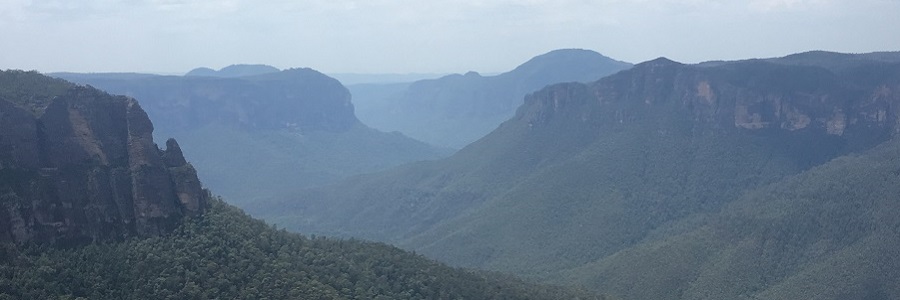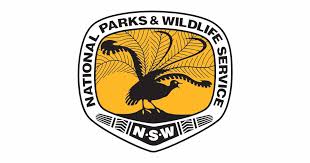Forest ecosystem health

What is the extent and condition and health of NSW forests, and what are the predicted trajectories?
There is about 20.5 million hectares of forest cover in NSW. Effectively monitoring the condition and health of such a large area presents an enormous challenge. NSW's forests are some of the most diverse in Australia, ranging from sub-alpine woodlands to semi-arid forests, sub-tropical rainforests, and floodplain woodlands to forested woodlands.
Project FE1: Baselines, drivers and trends for forest extent, condition and health
Project FE1: Baselines, drivers and trends for forest extent, condition and health
 |
 |
 |
 |
 |
 |
 |
In a first for NSW, a consortium of Australia’s leading spatial and remote sensing scientists has developed methods to measure forest extent, condition and loss of forests across the NSW Regional Forest Agreement regions between 1995 and 2019. The scientists extended the analysis to include forests across NSW between 1995-2020 to include the impacts of the NSW 2019-20 wildfires.
New methods in place
The consortium has developed methods to measure historical trends in forest canopy extent. The methods leverage existing data from an extensive set of existing and historical forest monitoring programs.
Three methods are now available:
- Forest extent: this method uses the National Carbon Accounting System (NCAS) National Forest and Sparse Woody Vegetation Data based on Landsat 25m satellite imagery to provide annual temporal canopy coverage from 1988 to 2019 for eastern NSW. For the purposes of this project forest extent relates to canopy cover at a given point in time.
- Forest condition: this method uses the SpatialLinks Toolkit which was developed as part of the NSW Government’s Biodiversity Indicators Program. This tool focusses on monitoring of landscape scale connectivity, including modelling estimates of ecological condition.
- Forest loss and recovery: this method assesses the agents or pressures that affect the capacity of native forests to maintain normal ecosystem functions and sustainably provide productive capacity. This was developed using a Multiple Lines of Evidence approach using available datasets, such as, the NSW SLATS Woody Change data product.
In applying the methods, the researchers found the overall forest canopy extent has increased across NSW between 1995 and 2019. Most of the increase has occurred on private land, while remaining relatively stable on public land. However, forest canopy extent was significantly impacted by the 2019-20 wildfires.
We will publish a summary report shortly.
The report, methods and project data can be found on TERN - see links in DATA below.
Papers and reports
- Method paper – Forest extent – Spatial Vision (December 2022)
- Method paper – Forest Condition – Spatial Vision (December 2022)
- Method paper – Forest loss and recovery – Spatial Vision (December 2022)
Data
The report, methods and project data can be found on TERN through the following links:
Project FE2: Supporting post-fire ecological resilience and recovery planning in forests
Project FE2: Supporting post-fire ecological resilience and recovery planning in forests
 |
 |
 |
 |
The program engaged researchers at the NSW Department of Planning and Environment to lead and deliver tools and methods to assess and predict vegetation recovery after post-fire events.
National and global trends in wildfire activity are increasing with warmer and drier spring seasonal climate conditions. This places increased emphasis on planning and monitoring post-fire ecological recovery across NSW forests.
The program team have delivered a final report.
Project outcomes
The project developed a new innovative remote sensing method to monitor post-fire vegetation recovery and estimate regrowth after a forest fire event. This will allow important baseline information for on-going assessments at regular intervals.
The project undertook a comprehensive literature review, developed and tested new modelling platforms and collected field data to validate the model. The post-fire spectral recovery method is designed to fully integrate with the NSW Fire Extent and Severity Mapping program (or commonly known as FESM). The research also focused on complementary lines of research including modelling to predict likely time for full vegetation recovery, analysis on historical fire severity and patterns and testing application of LiDAR capabilities.
Researchers have outlined further work including steps to move the research into an operational work program.
The final project summary report is now available below, along with supporting papers such as the literature review. Researchers have published articles on this project in peer-reviewed scientific journals.
Project partners
Dr Rebecca Gibson, Energy, Environment and Science unit at the NSW Department of Planning and Environment led the team with partners from the NSW Rural Fire Service, NSW National Parks and Wildlife Service, the Bushfire Management Research Hub at University of Wollongong, the Joint Remote Sensing Research Program, the University of NSW, and the University of Queensland.
Papers and reports
Baselines - Forest ecosystem
- Supporting post-fire ecological resilience and recovery planning in NSW forests – Final summary report (November 2021)
- Supporting post-fire ecological resilience and recovery planning in NSW forests – Milestone 3 report (March 2021)
- Fact sheet - NSW fire extent and severity mapping (December 2020)
- Supporting post-fire ecological resilience and recovery planning in NSW forests – Milestone 2 report (October 2020)
- Supporting post-fire ecological resilience and recovery planning in NSW forests – Milestone 1 report (March 2020)
Journal articles
The post-fire stability index; a new approach to monitoring post-fire recovery by satellite imagery
Gibson R K, White L A, Hislop S, Nolan R H, Dorrough J (2022) ‘The post-fire stability index; a new approach to monitoring post-fire recovery by satellite imagery’. Remote Sensing of Environment, Vol 280, 113151.
Signs of resilience in resprouting Eucalyptus forests, but areas of concern: one year of post-fire recovery from Australia’s Black Summer of 2019–2020
Gibson R K, Hislop S (2022) ‘Signs of resilience in resprouting Eucalyptus forests, but areas of concern: one year of post-fire recovery from Australia’s Black Summer of 2019–2020’, International Journal of Wildland Fire, 31, 545-557.
Project FE3: Mobile terrestrial laser scanning of NSW native forests
Project FE3: Mobile terrestrial laser scanning of NSW native forests
 |
In 2021, mobile terrestrial LiDAR data and ground-based measurements of forest structure were collected across 15 native forest plots in coastal NSW as part of a small pilot program. Typically, this kind of information must be collected manually, which is time consuming and expensive.
Captured using LiDAR remote sensing, the data from this trial was able to be captured in around 10 minutes. This provides detailed information on forest structure in remote and inaccessible settings to help improve forest management.
The pilot has generated a valuable source of information that could be used to conduct further research and development of forest measurement metrics, particularly to explore the use of artificial intelligence to automate extraction of additional forest variables.
This data has now been made publicly available through the TERN data discovery portal. In line with our open data policy, we encourage the scientific community to take a look.
This article and short video provide an overview of how the LiDAR data were captured.
Data
The report, methods and project data is available on the TERN data discovery portal.
Data
The report, methods and project data is available on the TERN data discovery portal.
